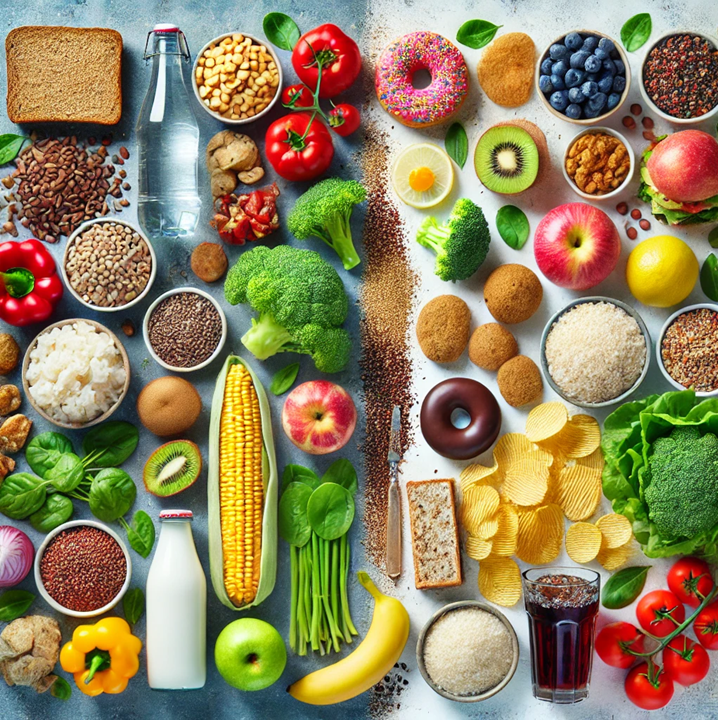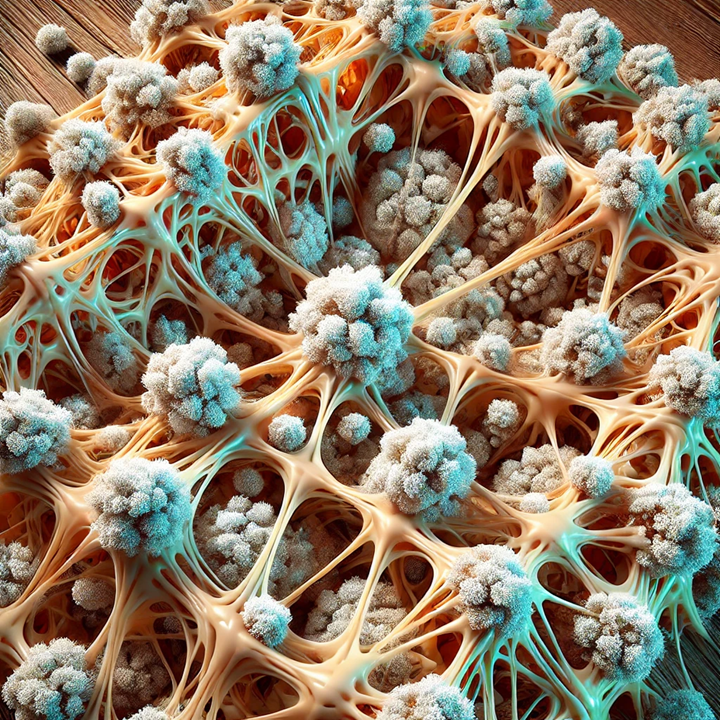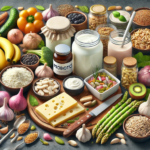What is Glycemic Index?
The Glycemic Index (GI) is a ranking system that measures how quickly carbohydrate-containing foods raise blood sugar levels after consumption.
Foods are scored on a scale from 0 to 100 – with higher values indicating a rapid increase in blood sugar. For example, low-GI carbs like lentils (GI of 32) and apples (GI of 36) are digested and absorbed relatively slowly, leading to a gradual rise in blood sugar levels. In contrast, high-GI foods such as white bread (GI of 75) and rice cakes (GI of 82) cause a rapid spike in blood sugar. It’s important to note that foods like meat, fish, and eggs have a GI of 0, as they contain negligible amounts of carbohydrates and do not significantly raise blood sugar levels. However, these foods can still influence insulin response – as protein and fat intake can still affect insulin secretion. Kolic J, Sun WG, Cen HH, et al. Proteomic predictors of individualized nutrient-specific insulin secretion in health and disease. Preprint. medRxiv. 2024;2023.05.24.23290298. Published 2024 Mar 5. doi:10.1101/2023.05.24.23290298
What Factors Affect Glycemic Index?
Several factors within food affect its GI. These include the type of carbohydrate, fiber content, ripeness in the case of fruits, and preparation method.

Type of Carbohydrate: Simple carbohydrates – like those found in sugar and white bread, generally have a higher GI compared to complex carbohydrates found in whole grains and legumes. This happens because simple carbs are the most basic form of carbohydrates and are already broken down into small molecules that are ready for absorption and transport in blood. In contrast, complex carbohydrates need a certain amount of digestion and processing, and that takes time. Refined carbohydrates are even worse because they have been processed and stripped out of fiber and nutrients – so they typically have a higher GI than their unrefined counterparts

Fiber Content: High-fiber foods, such as vegetables, fruits, and whole grains, tend to have a lower GI because the carbohydrate molecules are trapped in between fiber, and that slows down the release, digestion, and absorption of carbohydrates. Fiber is great and has many benefits, consider fiber supplements.
Ripeness: The ripeness of fruit can affect its GI. For example, a ripe banana has a higher GI than a green, unripe banana because the starches convert to sugars as the fruit ripens.
Preparation Method: How food is prepared can also influence its GI. Cooking methods like boiling, baking, or frying can alter the food’s molecular structure and digestion rate. For instance, al dente pasta has a lower GI than overcooked pasta – overcooked pasta is mushy, making those molecules ready to go into solution and spike your blood sugar.
🤔Why you need to Know
Understanding the Glycemic Index can help you make informed dietary choices to manage blood sugar levels, improve energy levels, and support overall health. Here are some practical ways to incorporate low-GI foods into your diet:
- Choose Whole Grains: Opt for whole grains like oats, quinoa, and brown rice instead of refined grains.
- Select Low-GI Fruits and Vegetables: Include apples, berries, leafy greens, and non-starchy vegetables in your meals.
- Balance Your Meals: Combine high-GI foods with proteins, healthy fats, and fiber to lower the overall GI of the meal.
- Read Labels: Be mindful of food labels and choose products with lower GI values when possible.
Glycemic Index of Various Foods (Cheat Sheet)
- Meat (beef, chicken, fish) – 0
- Eggs – 0
- Cheese – 0
- Tuna – 0
- A Cup of Black Coffee – 0
- Lettuce – 15
- Spinach – 15
- Broccoli – 15
- Cauliflower – 15
- Tomatoes – 15
- Bell Peppers – 15
- Cherries – 22
- Grapefruit – 25
- Peanuts – 28
- Plums – 29
- Lentils – 32
- Apples – 36
- Pears – 38
- Oranges – 40
- Carrots – 41
- Milk – 41
- Yogurt – 41
- Pasta (al dente) – 42
- Sweet Potatoes – 44
- Bananas – 51
- Grapes – 53
- Brown Rice – 55
- Oatmeal – 55
- Whole Wheat Bread – 55
- Corn – 55
- Pineapple – 59
- Potato Chips – 60
- Pizza – 60
- Mashed Potatoes – 70
- White Rice – 72
- Instant Oatmeal – 75
- White Bread – 75
- Rice Cakes – 82
- Watermelon – 76
- Doughnut – 76
- Fried Chicken – 80
- Pretzels – 83
- Ice Cream – 87
- French Fries – 87
- Hamburger Bun – 87
- Bagel – 95
- Jelly Beans – 80
- Cornflakes – 93
- Rice Krispies – 82
- Pure Glucose (reference) – 100
🧠Trivia
The concept of the Glycemic Index was first developed in 1981 by Dr. David Jenkins, a professor at the University of Toronto. Dr. Jenkins’ pioneering research aimed to understand how different carbohydrate-containing foods affected blood sugar levels, especially for individuals with diabetes.



